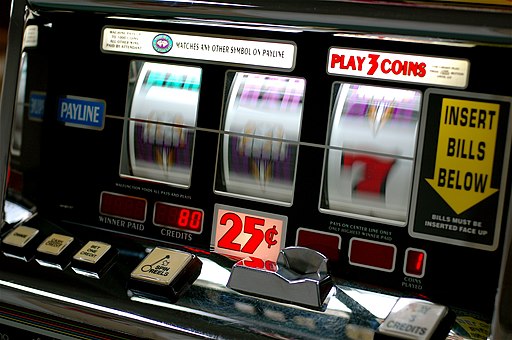
Source: Flickr / Images of Money.
Owning property at the corporate level can be both a blessing and a curse. It ensures control of the property, but it ties up capital that could be put toward growth. That's why Penn National Gaming spun off its real estate into Gaming and Leisure Properties (GLPI 1.30%) -- the first gambling focused real estate investment trust (REIT). Is the opportunity for Gaming and Leisure as big as Penn would have you believe?
Weighed down
Owning a building costs a lot of money. That's why companies like W. P. Carey (WPC 0.16%) have been so successful for so long, as the company employs what's known as a triple net lease with their properties.

Source: Public domain, via Wikimedia Commons.
Under a triple net lease, the REIT buys properties from companies and then leases them back to the seller under long-term agreements. Companies are happy to do this because they get the weight of a property off of their balance sheets and it ensures access to their key properties. For example, W.P Carey famously paid $225 million dollars for the space in The New York Times building occupied by the paper in New York City. The transaction gave the iconic newspaper valuable financing and provided W.P. Carey with an above-market return for the 15-year lease term.
These types of deals net Carey reliable tenants and, even better, customers willing to take care of virtually all of the expenses of owning a property. W.P. Carey essentially gets to sit back and collect rent. How good of a deal is this? W.P. Carey has increased its quarterly dividend 56 times in a row. So when Penn National was getting ready to spin off Gaming and Leisure Properties using a triple net lease structure, it sounded like a good deal.
Too focused?
There's a big difference, however, between the Carey business model and Gaming and Leisure's model. For example, Carey has exposure to over 25 industries, and about 30% of its portfolio is located overseas. Gaming and Leisure is in one industry, one country, and, basically, one tenant.

Source: Jeff Kubina, via Wikimedia Commons
Leading up to the spin-off, Penn National pointed out that there are around 250 gaming facilities in the United States. That, it suggests, will provide plenty of growth. However, Gaming and Leisure started its life owning around 30 of those properties -- not really much growth potential. Carey, for comparison, owns around 700 properties.
Add to this the fact that almost all of Gaming and Leisure's portfolio is leased to Penn, and you start to see a risky trend. That's true even though the properties are leased with a triple net lease structure. Carey, for example, has 234 tenants across its properties.
The upside...
So, Gaming and Leisure has some pretty big risks to consider. However, there are triple net lease REITs already out there with extremely concentrated portfolios that are doing just fine. One key is that those REITs quickly grew there portfolios in a short amount of time to accomplish a suitable level of diversity.
If Gaming and Leisure ventures outside of its gambling niche, it could expand rapidly, like other entertainment-focused REITs that own assets as diverse as water parks, movie theaters, and ski facilities. This would materially reduce the REIT's risk profile.
While Gaming and Leisure is probably too small and focused for conservative investors, it has the potential to grow into something much bigger. If management starts to move beyond casinos, it may be worth another look. Right now, however, I wouldn't place a wager on this one.





